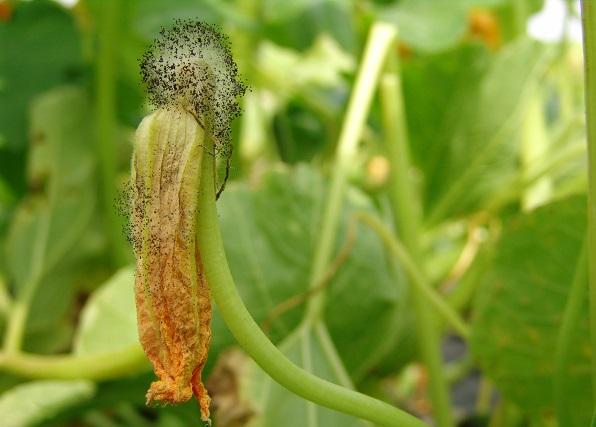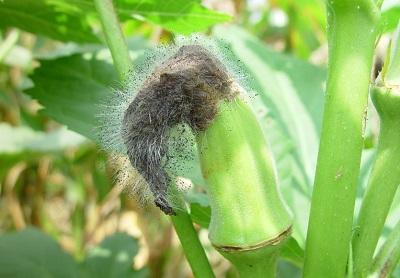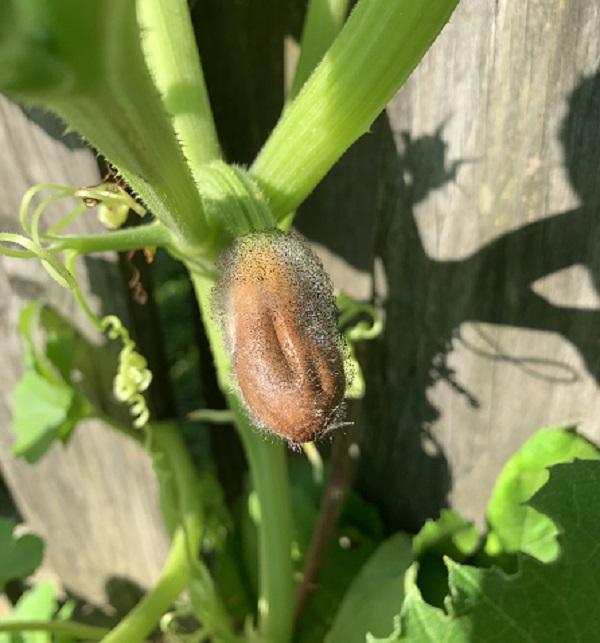Rotting zucchini and other vegetables
Rotting, mushy squash, pumpkins, eggplant, or chili peppers is a symptom of a common fungal disease called choanephora rot. It first appears on dying blossoms that are still attached to fruits. The disease then spreads to the fruit (usually appears first at the blossom-end but may also appear at the stem end). Affected fruit parts turn dark brown to black and then become fuzzy and mushy. Thousands of tiny black dots can be seen with a hand lens on infected fruit (resembles a pincushion). The disease is more noticeable when the weather is warm, humid, and rainy. The pathogen overwinters on dead plants and in soil and is spread to squash blossoms by bees, cucumber beetles, and splashing water.

Gerald Holmes, Strawberry Center, Cal Poly San Luis Obispo, Bugwood.org

Gerald Holmes, Strawberry Center, Cal Poly San Luis Obispo, Bugwood.org

Management
Lay a mulch of shredded leaves, dried grass clippings, or newspaper covered with straw under plants. Quickly remove infected fruits. Remove all plant residue at the end of the growing season.
